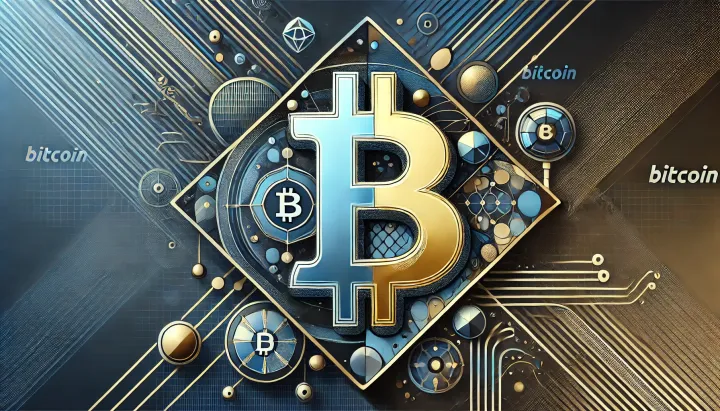Pro-Climate Bitcoiners: Decentralized Protest Dynamics
The April 08, 2025 episode of The Progressive Bitcoiner featuring The Wise Rabbit examines how pro‑climate Bitcoiners are pioneering decentralized protest strategies that fuse economic critique with urgent climate activism.

- My 'briefing notes' summarize the content of podcast episodes; they do not reflect my own views.
- They contain (1) a summary of podcast content, (2) potential information gaps, and (3) some speculative views on wider Bitcoin implications.
- Pay attention to broadcast dates (I often summarize older episodes)
- Some episodes I summarize may be sponsored: don't trust, verify, if the information you are looking for is to be used for decision-making.
Summary
The April 08, 2025 episode of The Progressive Bitcoiner featuring The Wise Rabbit examines how pro‑climate Bitcoiners are pioneering decentralized protest strategies that fuse economic critique with urgent climate activism. The discussion highlights innovative protest performance, creative messaging, and community-based mobilization, all grounded in Bitcoin’s core principles. The episode underscores the importance of legal safeguards and coordinated grassroots actions in shifting public discourse.
Take-Home Messages
- Decentralized Organization: Flexible, bottom-up structures empower Bitcoiners to challenge traditional power systems.
- Fusion of Art and Activism: Integrating performance art with protest messaging boosts public engagement and clarity.
- Sustained Activism: Addressing participant burnout is vital for maintaining long-term protest momentum.
- Legal Protections: Robust legal frameworks are essential to safeguard decentralized protest actions.
- Cultural Resonance: Clear, culturally sensitive messaging bridges the gap between niche Bitcoin communities and broader societal concerns.
Overview
The podcast episode features The Wise Rabbit discussing his journey from isolated Bitcoin research to active climate protest. He explains how his academic dissent and evolving understanding of Bitcoin led him to embrace decentralized protest as a means to challenge traditional financial and environmental systems.
The conversation explores innovative protest methodologies that draw on Bitcoin’s decentralized ethos, emphasizing performance art and creative sign messaging. The guest compares these emerging tactics with established movements like Fridays for Future, illustrating an evolution toward a more adaptable and resilient protest model.
A key focus is on overcoming public indifference and coordinating decentralized cells without central leadership. The discussion reveals practical challenges such as sustaining participant energy and clarifying complex dual messages that merge economic critique with climate activism.
Legal risks and institutional resistance are also addressed, emphasizing the need for regulatory frameworks that protect peaceful decentralized actions. Overall, the episode outlines a transformative vision where pro‑climate Bitcoiners leverage their core values to foster systemic change.
Stakeholder Perspectives
- Activists: Advocate for decentralized, innovative protest methods that integrate economic critique with climate urgency.
- Pro‑climate Bitcoin Community: View these strategies as a means to advance both financial reform and environmental sustainability.
- Traditional Financial Institutions: Likely perceive the protests as disruptive challenges to conventional economic systems.
- Policy Makers and Legal Experts: Focus on developing legal frameworks to balance public order with the protection of peaceful protest rights.
- General Public: May need clearer, relatable messaging to understand the dual objectives of economic reform and climate action.
Implications and Future Outlook
The integration of decentralized protest methods with Bitcoin’s ethos signals a potential paradigm shift in civic activism. By merging performance art with strategic messaging, pro‑climate Bitcoiners can create movements that are both visible and resilient, potentially influencing policy debates and challenging established economic institutions.
Looking forward, addressing issues such as participant burnout and ambiguous communication will be critical. Strengthening community coordination and legal protections can enable these protests to scale and maintain momentum over time.
The evolving protest model may pave the way for broader societal change by encouraging interdisciplinary collaboration among activists, legal experts, and policy makers. Such cooperation is expected to enhance the capacity of decentralized movements to drive systemic reforms.
Some Key Information Gaps
- How can decentralized protests overcome public indifference to achieve broader social recognition? This gap is critical because public engagement is essential for transforming isolated actions into a cohesive movement that influences change. Overcoming apathy is necessary to amplify the movement’s impact on both economic and climate issues.
- In what ways can decentralized protest cells be effectively coordinated without centralized leadership? Effective coordination is vital for ensuring consistent messaging and sustaining momentum across decentralized actions. Addressing this gap will help activate existing Bitcoin community networks and drive collective mobilization.
- How can Bitcoin’s principles be applied to design more impactful protest strategies that combine art and activism? This question links Bitcoin’s ideological foundation with creative protest methodologies, offering a pathway to enhance both visual appeal and persuasive power. Integrating these elements can yield a more compelling narrative for systemic change.
- How can the dual focus on economic critique and protest activism be effectively integrated in public messaging? Merging these themes into a coherent narrative remains challenging yet essential for clear public communication. Bridging this gap will help translate niche Bitcoin perspectives into broadly accessible messages.
- What legal frameworks can protect decentralized protest actions from state crackdown while maintaining visibility? Establishing strong legal safeguards is fundamental for preserving protest activities against potential repression. Addressing this issue is key to ensuring that innovative protest methods can persist in the face of institutional resistance.
Broader Implications for Bitcoin
Economic and Environmental Reformation
The podcast highlights that decentralized protest methods rooted in Bitcoin’s ethos could catalyze broader economic reconfigurations by challenging centralized financial systems. This transformation encourages a shift toward more resilient, community-driven economic models that prioritize transparency and self-custody. In parallel, the fusion of economic critique with climate activism can spur environmental policy reforms, emphasizing sustainable practices over profit-driven growth.
Cultural and Social Transformation
By integrating performance art with protest activism, the movement redefines traditional protest narratives, promoting a culture that values creativity, inclusivity, and grassroots engagement. This cultural shift has the potential to realign public discourse on both economic and environmental issues, making them more accessible and relatable. As decentralized protest actions gain recognition, they can inspire similar movements globally, reinforcing the power of bottom-up social change.
Legal and Policy Innovations
The discussion underscores the need for adaptive legal frameworks that accommodate decentralized forms of protest without stifling political expression. Such frameworks could not only protect activists but also encourage innovative methods of civic engagement. By paving the way for legal recognition of decentralized protest actions, policy makers can contribute to a more balanced approach to public dissent and democratic participation.



Comments ()